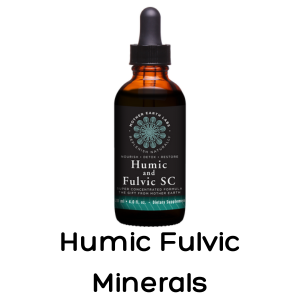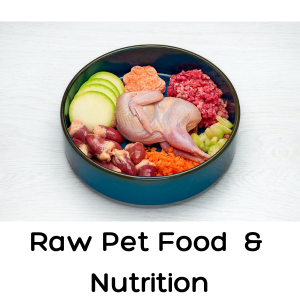Giving the best care to your beloved dog not only means providing the right diet, but also paying attention to pooping. As you know, digestive health makes a big difference in anyone’s energy and mood. When you finish reading this article, you’re going to be an expert on poop! More specifically, on what can make a dog poop and SOLUTIONS how to make a dog poop quickly.
In addition, we’re going to tell you about possible causes of constipation, easy ways to prevent it, the magic of pumpkin, and treatments you can manage yourself before running to the vet.
How Long Can A Dog Go Without Pooping?
Under most circumstances, dogs are pretty regular, often going twice a day. Not always, though. Not pooping is certainly something noticeable: 36-48 hours is the time frame for exploring what’s wrong and deciding what action to take. Does your pooch have any of these issues? Here’s a handy checklist:
- Excessive self-grooming: Licking and swallowing too much fur
- Matted long fur around the anus: Blocking the exit
- Decrease in recent food intake or water intake
- Past problems with constipation
- A medication change
- Decrease in normal exercise
- Eating kitty litter, toys, or other non-food items
- Changing to a new food or diet
- Too much raw bone: Imbalance in the proportion of natural ingredients
- Stress factors in the home or environment: More explanation about this shortly
Constipation is not normal and can become serious. It’s important to keep on top of pets’ health habits to know when and how to help a dog poop quickly.
How To Make A Dog Poop Instantly with Pumpkin: DIRECTIONS
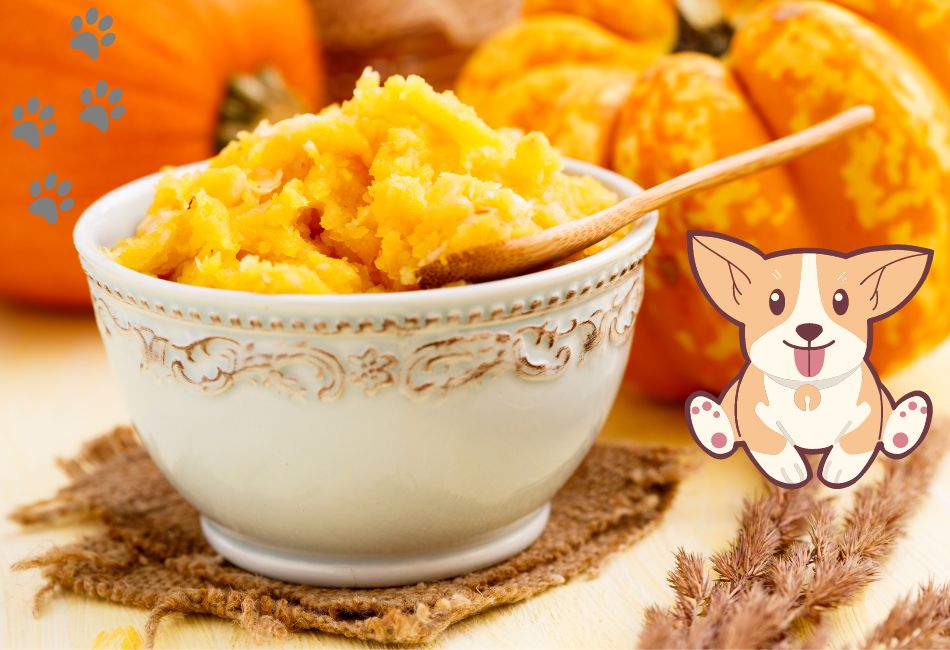
HAPPY TIP: Pure canned pumpkin is the #1 choice for how to make a dog poop quickly, recommended by dog and constipation experts the world around! You can use canned, but you can also bake or steam fresh pumpkin. The warmed puree is easy to swallow and digest.
Pure canned pumpkin is the #1 choice for how to make a dog poop quickly.
Directions
- 1 TEASPOON of Organic Pure Canned Pumpkin
- Per 10 pounds of body weight (up to 1/4 cup
- Mix into Food
You can give about 1 teaspoon per 10 pounds of body weight up to a quarter cup, just mixing it into the food. Not only does pumpkin contain both soluble and insoluble fiber, but it tastes pleasant and moves quickly from the stomach into the gut. Fiber acts as a prebiotic by feeding the beneficial bacteria in the intestines and inhibiting the growth of harmful bacteria. It lowers the pH level and provides the necessary nutrients these bacteria need.
Using whole foods like pumpkins is IDEAL. Dogs are omnivores who need plants in their diets. Let’s look at that some more.
How To Make A Constipated Dog Poop Quickly: MORE SOLUTIONS
We’ve got a list of options for you. These not only demonstrate how to make a dog poop quickly but will do the same for you and everyone you care about!
PUMPKIN: Pumpkin is so good at remedying digestive problems that we’ve got a whole separate section about it. You can also use cooked sweet potato with the skin, but the word “sweet” clues you in that this vegetable contains a lot of sugar.
Walking: Go for extra walks. Space the outings so your dog has lots of opportunities to eliminate once the urge is there. Exercise also stimulates the digestive system to push the stool along.
Taking advantage of the gastrocolic reflex: “Gastro-” refers to the stomach and “-colic” refers to the colon, otherwise known as the large intestine where poop is stored. Food entering the stomach triggers the colon to empty to make more room for digestion. Regularly walking right after eating often prevents as well as cures constipation.
Identifying possible causes of constipation:
Check out the checklist above
Giving enough water: Plenty of clean, fresh drinking water lubricates and softens the poop mass and speeds transit time out.
Natural plant foods: Dogs are omnivores, consuming a variety of plant matter along with animal tissue. Veggies and fruits such as pumpkin, apples, green beans, carrots, zuczchini, broccoli, spinach, papaya, and beets are good sources of fiber and moisture.
Homemade stews: Make nutritious and delicious doggie stews with fresh meats, veggies, and broth. Your pooch will love you and so will your pooch’s gut.
Natural oils: Coconut oil, olive oil (extra virgin is best), sunflower oil, and others are lubricating and contribute to intestinal health in general. Dog dosage ranges from two teaspoons to two tablespoons with food. Start with a small amount and increase gradually because too much oil too fast can cause diarrhea. Fish oil, especially wild-caught minimally processed salmon oil, is extremely nutritious and beneficial.
Emotional Component

Tummy rubs: Gently massaging the abdomen over the intestines clockwise is calming, comforting, and stimulates peristalsis (intestinal contractions that push food along during digestion).
Soft talk: Talk slowly and gently to your furbaby, offering reassurances of love and safety; communication, as we’ll discuss shortly, is one of the best medicines.
Keep notes, for yourself as well as the vet if you end up calling. Your dog trusts you more than anyone else.
A Quick Course on Dog Innards
The canine digestive system differs from ours in several ways. Dogs can’t chew and grind food side to side, but they tear off chunks to swallow down. Canines produce up to 100 times the amount of acid that humans do so they can digest tough animal tissues such as cartilage and bone, but also their preys’ stomach contents including seeds, grasses, and other plant material.
In addition, the acids effectively kill many disease-causing microorganisms. From mouth to rear end, food has a much faster transit time in dogs (6-8 hours) than in humans (20-30 hours). Now you understand why not eliminating solid waste for more than 48 hours is harmful and why knowing how to make a dog poop quickly is vital.
Want more interesting facts about doggie digestion? You might know that your doggy has two anal glands, one on each side of the anus. The powerful scent is like a fingerprint in that it’s unique to each dog and used for marking territory. Anal glands sometimes become impacted, densely packed with secretions.
Anal gland impaction can cause symptoms similar to those of constipation along with swelling, tenderness, foul odor, and frequent licking. Adding cooked pumpkin to the diet alters the consistency of the stool and stimulates the glands to empty.
What’s REALLY Interesting about Digestion: The Hidden Civilizations inside All Intestines
Did you know that inside your intestines, commonly called “the gut,” is a thriving metropolis of tiny citizens? The inhabitants of the intestinal microbiome — the microscopic biological community — make up a diverse population of bacteria, fungi, and viruses. To understand how to make a dog poop quickly, let’s examine more about how this microbiome stays in balance:
- Prebiotics: Substances that feed the intestinal microbiome thrive
- Probiotics: Strains of different bacteria in the intestinal microbiome with a balanced ecology that protects the health of the organism they colonize
- Postbiotics: The beneficial leftover products of probiotics’ metabolism
- Fiber: “Soluble” refers to dissolving in water. When hydrated, soluble fiber turns into a gel that plumps up the liquidy semi-digested food; by transforming the newly forming stool into a soft mass, soluble fiber not only prevents constipation but also diarrhea. Improved absorption of nutrients occurs when the texture of poop is, in the words of Goldilocks, “ju-u-u-st right.”
Prevention is always best, but what about when your pooch is already constipated? Insoluble fiber is how to make a dog poop quickly: just as a dry towel soaks up liquid, dry, insoluble fiber pulls water from the intestinal lining into hardened poop, softening it and lubricating the surface.
Why Vegetables & Fruits Are Good for Dogs
Dogs’ wild ancestors survived by consuming a BARF diet made of natural whole foods. “BARF” stands for “biologically appropriate raw food.” Swallowing small animals whole, consuming the stomachs and intestines of large prey, and nibbling on grasses (that means grains), roots, and different fruits and vegetables were part of their lives.
Grain-free dog foods are advertised less and less as an optimum choice. Canine nutrition experts have discovered long-term problems emerging in dogs fed only grain-free products. As we’ll explain shortly, the key to good nutrition is variety, but in balance.
How To Make A Dog Poop Quickly ~ Some Home Remedies
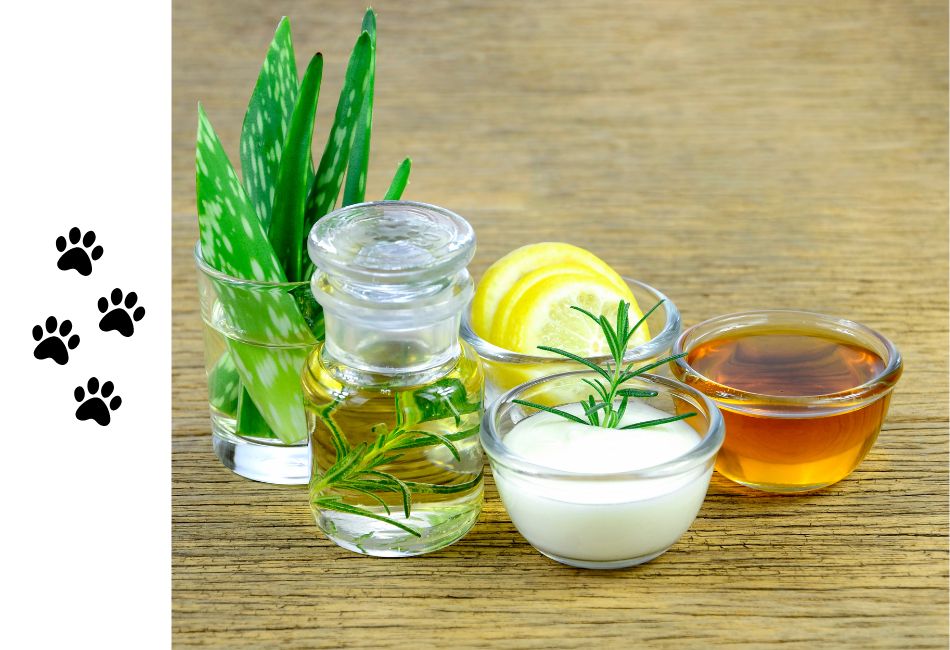
In addition to the treatments listed above, some holistic veterinarians and practitioners of alternative medicine use other treatments. Some of them are very ancient. The method of administration may vary from dog to dog and may interact with foods, medications, and health supplements. Some are meant as temporary remedies while some are most useful when given regularly. Definitely consult with your dog’s vet before trying these methods so you won’t cause harm.
- Aloe vera: Stimulates muscle contractions, lubricates the digestive tract, and adds moisture to stool; the yellow latex inside the leaf is very toxic to dogs.
- Apple cider vinegar: Trendy but not a miracle cure; may increase colon contractions; sometimes mixed with food to use as a prebiotic.
- Chickweed: Grows wild; used as a gentle laxative.
- Dandelions: All parts are nutritious and supply prebiotics.
- Flax seeds: Fiber and oil source; create lubricating mucilage.
- Goat’s milk: Easily digestible unless the dog has a milk allergy; contains both prebiotics and probiotics.
- Marshmallow root: Soothes, relaxes, and lubricates the digestive tract.
- Organ meats: May compensate for the addition of too much raw bone.
- Psyllium: A gentle soluble fiber but must be used without sweeteners or additives.
- Slippery elm: A well-known and well-loved digestive aid providing soothing, lubricating mucilage coating.
- Squirting water: Similar to using ice cubes or digital stimulation, sprays of water onto the anus stimulate the bowels to move; be mindful of the temperature and amount of pressure; an assistant is advisable.
- Wheat bran (unsweetened): A small amount mixed with meals adds insoluble fiber; best when accompanied by chopped leafy greens.
- Yogurt or kefir (a special type of cultured milk rich in probiotics): If your dog is not allergic to milk, occasional small doses can be very beneficial, especially after taking antibiotic.
Benefits of Whole Raw Food Diets vs. Processed Foods
Dogs on a raw food diet will poop noticeably less because most of their food is made from absorbable ingredients instead of commercial fillers. Kibble contains extra carbohydrate to make your dog feel full, but most of it passes right out.
Another advantage of whole food and raw food diets is that they aren’t adulterated with preservatives, artificial food coloring, scent additives, extra fat, and non-nutritive flavorings. Remember when changing your canine companion’s diet to start slowly using small portions to give the digestive system time to adjust.
Great Natural Additions to Improve the Canine Diet
Here are some healthful ingredients to add nutrition and variety to your pooch’s meals:
- Bone broth: Slow-cooked to melt down cartilage, fat, tendons, ligaments, and marrow; can be frozen into cubes.
- Bone mince: Soft raw bone and meat finely chopped; because chickens are slaughtered younger, their bones are less dense than those of older animals such as turkeys and other adult critters.
- Eggs: Fresh, organic, from local sources, shell included.
- Fish: Frozen for two days to kill parasites; canned sardines and salmon without brine.
- Kelp: Fresh or frozen without seasonings or concentrated salt.
- Organ meats: Fish heads with brains and eyes, gizzards, kidneys, livers, lungs, spleens, etc.
What about Raw Bones?
Minerals and other nutrients in raw bones are best absorbed from small, tender, minced bones such as necks, feet/trotters, and tails. In the wild, small prey such as birds, rodents, and amphibians are usually eaten whole, bones and all. Weight-bearing bones, especially in larger animals, are more robust to support muscles for locomotion; being denser, big leg bones are better suited to provide dental and recreational benefits.
Dogs eating long bones should be monitored to prevent the possibility of splinter injuries. A tip on how to make a dog poop quickly: remember not to overdo feeding raw bone. Keep it down to 10% of the diet.
Sample RAW FOOD Food Recipe for Adult Dogs
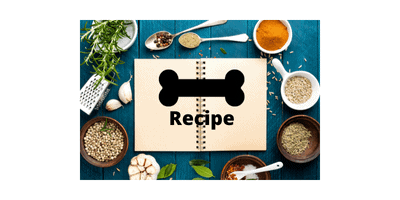
Notes: This makes a lot but can be portioned and frozen to meet your needs. Also, if your pooch is overweight, substitute red meat with white.
INGREDIENTS:
- 7kg (15-1/2 pounds) fresh organic poultry, whole or in pieces with meaty bones
- 1kg (2 pounds) fresh organic beef, lamb, and/or green tripe (raw, unbleached stomach lining of grass-eating animals)
- 1kg (2 pounds) of mixed organic organ meats
- 1kg (2 pounds) of blitzed (blenderized) veggies (especially green stuff like kale, spinach, and/or broccoli, whatever is in season)
Recommended extras: A handful of blueberries or blackberries, 4 organic eggs, a drop of cod liver oil, and a few frozen mussels
INSTRUCTIONS:
- Mix all ingredients together
- Stir until well-blended
- Place individual portions into appropriate containers and freeze
- Thaw as needed 5-6 hours in refrigerator; will stay fresh up to 4 days.
https://dogsfirst.ie/raw-dog-food-recipes/
A Doggie STEW Recipe to Help with Constipation

Since digestive problems are frequently caused by improper diet, stews made with fresh, natural ingredients are often a MIRACLE instant cure. Want to know how to make a dog poop quickly? Try this:
INGREDIENTS:
- 2 teaspoons olive oil
- 1 lb. ground turkey
- 1 lb. shredded chicken
- 3 cups water
- 1 peeled, diced medium sweet potato,
- 2 cups cooked brown rice
- ½ cup lentils
- 2 tbsp. pureed pumpkin (not pie filling)
- 1 cup chopped spinach
INSTRUCTIONS:
- Boil turkey and chicken in water over medium heat for 20 minutes.
- Take out the meat and set aside.
- To the water add the rice, lentils, and sweet potato. Boil 15 minutes.
- Add remaining ingredients, cooking until liquid is absorbed.
- Add cooked meat.
- Serve warm and watch your pooch enjoy it!
- Freeze remaining stew into portion sizes. Using a double boiler is preferable to microwaving for even heating. Feed as suggested by your dog’s vet.
https://www.withasplashofcolor.com/fiber-filled-homemade-dog-food-recipe/
When Your Dog Yelps while Pooping
Pooping isn’t supposed to be painful. Dryness, injury, or blockage can cause rectal pain. If you observe your furbaby behaving abnormally while struggling to pass fecal matter, check what comes out. Small, hard pieces, mucus, and blood indicate something’s wrong.
Paradoxically, sometimes diarrhea is actually a sign of constipation because undigested liquid stool flows around the impacted mass and dribbles out. Gently press your dog’s abdomen to feel for tenderness or a firm swelling. DO NOT give any laxative, stool softener, or enema, but call the vet immediately. Be prepared to bring your dog to the office right away because this is often a medical emergency. You can find a list of holistic vets from the American Holistic Veterinary Medical Association here.
The Importance of Species-Specific Diets
Over 2,000 years ago the Roman philosopher Lucretius said that “what is food for one man may be bitter poison to others.” In other words, what is good for some is bad for others. In terms of nutrition, it means that not all animals can absorb nutrients from the same foods.
For example, the primary diet of pandas is bamboo, and the primary diet of koalas is eucalyptus. Dogs, cats, and humans have different digestive systems. Focusing more closely, subspecies and even breeds (specially bred types of domesticated animals) have their own dietary requirements. In the case of dogs, a lean, active working breed will thrive on a high-protein, higher-fat diet that would promote obesity in a large, slow-moving breed.
Every feeding program needs to be individually adapted according to your pet’s type, age, health, and other conditions.
Prevention: the Quickest & Easiest Cure
Here’s a summary of care to help your dog live the best life possible:
- A balanced, breed-appropriate diet
- Clean water
- A regular exercise routine: A must-have! Walks are not just a quick bathroom visit or a speed walk for your convenience. Let your pooch set the pace. Dogs need to sniff, mark territory, find just the right spot to do their business, explore what’s going on in their neighborhood, and work off their pent-up energy. Respect any medical issues that affect their comfort, being especially mindful of the condition of their feet and nails.
- Absence of pain
- Emotional wellbeing
Mentally & Emotionally Balanced Dogs Have Better Physical Health
Emotional wellbeing is a big deal. Canines not only need their physical needs met, but need to feel safe and secure without fear of threats. Being pack animals, they require acceptance in a group, socialization, communication, and opportunities for play and exploration. Not just occasionally but as a way of life.
Anxiety from stress definitely causes physical health problems such as constipation. Stressors include disruptions in routine, changes in residents of the home, moving, frequent loud noise, loneliness, and abuse or history of abuse.
Are You Listening to Your Dog???
Humans too often punish dogs for unwanted behaviors without understanding dogs’ frustration at unsuccessful attempts to communicate. We’ve all known people who don’t pay attention to us. After a while, we don’t even bother trying to talk with them. Love doesn’t quite conquer all — communication matters, too.
Engage your fur pals — and feathered, finned, and scaled pals as well — in frequent “conversations” to establish a pattern of communication opportunities. Learn their forms of language and respond when they try to tell you something. Making a habit of it will show them that you’re listening.
Humans too often punish dogs for unwanted behaviors without understanding dogs’ frustration at unsuccessful attempts to communicate.
Final Thoughts
You’ve learned the number one tip on how to make a dog poop quickly; pumpkin. But, there is much to consider when asesseing ‘why~ you need to make your dog poop quickly.’ And most importantly we’ve shared what to do to prevent constipation or issues related to needing to make a dog poop quickly. There are many pointers to take away and you may want to re-read this post a few times.
Glossary
Biome: A natural area shared by a community of animals, plants, fungi, and other life forms
Blitz: British term for blenderize or puree
EVOO: Extra virgin olive oil
Gastrocolic reflex: An automatic response from the spinal cord, when food enters the stomach, to trigger the large bowel to poop
Green tripe: The raw, unbleached stomach lining of grass-eating animals without any processing
Inflammation: A protective response by the immune system to threats and damage to the body; may include fever, redness, and swelling to fight invaders and begin healing
Kefir: A fermented milk product rich in probiotics (beneficial bacteria in the intestines)
Laxative: A substance that stimulates peristalsis (bowel contractions) as opposed to a stool softener
Microbiome: A microscopic biome consisting of bacteria, fungi, protozoans, viruses, and microfauna such as nematodes, arthropods, tardigrades, etc.
Mucilage: A type of thick, gluey gel mostly produced by certain plants and composed of carbohydrates, proteins, and other organic substances
Peristalsis: The wave-like ripples produced by muscle contractions in the intestines to move food along during the digestive process
To Learn More
The ecology inside your dog’s intestines:
https://shop.animalbiome.com/blogs/pet-health/boost-dog-health-probiotics-prebiotics-postbiotics?_pos=7&_sid=6c0fac1aa&_ss=r
Dogs’ emotional needs:
https://www.dogdecoder.com/meeting-dogs-emotional-needs/
Canine communication:
https://centerforshelterdogs.tufts.edu/dog-behavior/dog-communication-and-body-language/






